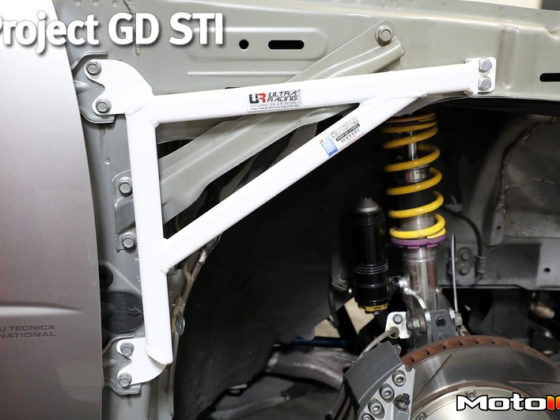,
Being a diesel, the Skyactiv-D has direct injection. Modern diesels spray fuel multiple times during a single combustion stroke which is why they are quieter than the old clanky diesels of yore. In the 1980s, my family had a Chevrolet Celebrity with diesel. It was very loud and slow and weak. Modern diesels are a lightyear of difference. Anyway….. The injection system of the Skyactiv-D can spray fuel up to a maximum of nine times per combustion stroke. We think this is part of how Mazda was able to make their diesel components not tank-like, by spreading out the combustion over more crank angle instead of one big whack.

Okay, so we’ve talked about Mazda’s development of various technologies in their old Miller cycle engine, Skyactiv-G, and Skyactiv-D engines. We think a mix of VVT, supercharger, and EGR are all being used to extend the range of operation of HCCI. But, VVT and EGR work too slowly to give the fine control necessary for HCCI. Consider those the big adjustment knobs to get close. The fast-acting fine adjustment knob is Mazda’s Spark Controlled Compression Ignition.
Remember how we said HCCI is pretty much exactly what standard gasoline spark ignition tries to avoid? Mazda came up with a very clever concept they call SPCCI which we think uses the same phenomenon that causes knock in a standard gasoline engine to control the combustion timing of HCCI very precisely. So we need to talk about engine knock very briefly.
Picture this: the spark plug sparks causing the detonation of the air:fuel mixture right around the plug. The flame front forms and spreads out and away from the central ignition point. The flame front burns the fuel and air in the cylinder as it moves through the mixture. This flame front increases the pressure and temperature of the unburned mixture in front of it. Sometimes, the pressure increases enough to cause combustion in the mixture before the flame reaches it creating knock.

SPCCI is genius because it uses the same physics which causes knock, to well, cause knock. Remember, Skyactiv-G uses direct injection and Skyactiv-D uses fuel injectors which can spray many times in one combustion cycle. So, what we think SPCCI does is spray a tiny bit of fuel right at the spark plug and the fuel is ignited- creating a little frame front. That flame front then increases the pressure and temperature in the homogenous mixture; basically, the mixture is getting compressed from below by the piston and then above by this tiny flame front. The tiny flame front increases the pressure until the whole enchilada goes off. As fuel and spark can be controlled very precisely and very quickly, it gives the superfast fine-tuning adjustability knob to control the timing of the full HCCI combustion in the cylinder.
Also recall the other challenge of HCCI is having a well-controlled and smooth transition to and from standard spark ignition operation. The transitions will be required going to high load operation or from cold-start. SPCCI kills two birds with one stone in allowing for controlling the timing of HCCI combustion and the smooth transition with standard spark ignition combustion. Don’t think for a second the tuning of this system will be easy. There’s a lot of modeling and algorithms developed for the previous Skyactiv engines and this one is sure to require more and some serious computing power.
So, to wrap it all up, Mazda has been working for a long time to reach the goal of HCCI. Using all their lessons learned from their old Miller cycle engine, their Skyactiv-G, -2.5T, and –D engines, they have reached the step of Skyactiv-X. Mazda claims 20%-30% better efficiency than the current Skyactiv-G engines along with 10%-30% more torque, and we believe it. HCCI allows for a lean burn while keeping NOx low, so no exhaust restrictive after treatment is required like a diesel. HCCI requires a sky (see what we did there…) high compression ratio which improves efficiency. We’re guessing it is using Miller cycle over a significant portion of the operating range which also improves efficiency. Since HCCI burns cooler, there is less heat loss and therefore increased efficiency. As the Skyactiv-X is equipped with a supercharger, it’ll have instant throttle response in keeping with the Zoom-Zoom philosophy. As it has a supercharger instead of a turbo, we’re guessing it’ll have a tuned header like the Skyactiv-G. To help extend the HCCI operating range, we’re guessing it’s using significant EGR like the Skyactiv-G 2.5T. To handle the high cylinder pressures, we’re guessing the Skyactiv-X has a beefy bottom-end similar to the Skyactiv-D. Finally, the secret sauce SPCCI gives Skyactiv-X the quick fine-tuning tool to control the timing of HCCI combustion and seamless transition to spark ignition. We’re guessing the Skyactiv-X will be around 45% brake thermal efficiency (BTE), which is in line with a modern high efficiency diesel. The current benchmark for a gasoline engine is the anemic 1.8L engine in the Toyota Prius Prime which has 40% BTE. Keep in mind that’s about 30% higher than a standard gas engine. So, Mazda has made a huge step in improving efficiency with the Skyactiv-X. We can’t wait to see what the Skyactiv-X can do when it comes to market.
Sources



